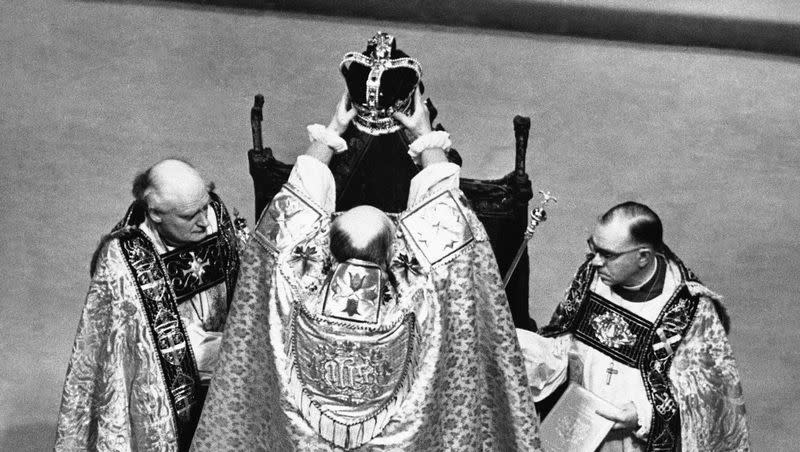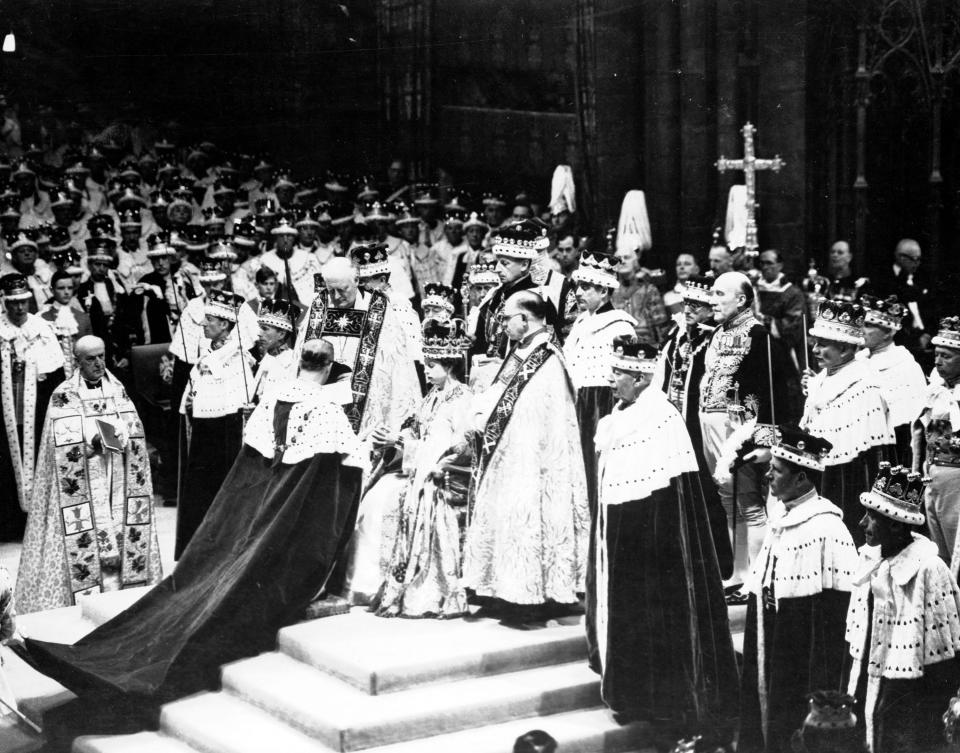The relationship between religion and the coronation, explained

- Oops!Something went wrong.Please try again later.
Saturday’s coronation of King Charles III will celebrate the United Kingdom’s religious past, present and future by pairing ancient rituals with newly designed nods to the country’s growing diversity, according to experts on the British monarchy and its traditions.
Crafted by the leader of the Church of England, Archbishop of Canterbury Justin Welby, this weekend’s coronation rite will — for the first time — include holy men and women from other faiths, even as it spotlights Christian teachings about God and kings.
“The coronation is first and foremost an act of Christian worship,” said Archbishop Welby in an April 29 statement.
But it’s an act of worship that will also aim to accomplish some secular goals, including presenting the new king as someone who is sensitive to the concerns of people of all faiths and none.
“Charles is trying to bridge the differences between the faith groups that make up Britain’s increasingly diverse society. Achieving that goal is critical to the new king’s efforts to show that the monarchy, a 1,000-year-old institution with Christian roots, can still represent the people of modern, multicultural Britain,” The Associated Press reported.
Related
How to watch King Charles III’s coronation ceremony in the U.S.
King Charles III is ‘defender of the faith.” But is he religious?
Religion’s historic role in the coronation
Religion has always played a central role in the coronation rite, which was last undertaken 70 years ago when Charles’ mother, Queen Elizabeth II, took the throne.
The service combines religious and secular rituals, nestling practices like the formal crowning of the new monarch in between the pieces of a typical worship service, such as scripture readings and a sermon.
But, as Archbishop Welby noted, much of the focus is on the new monarch’s promises to God, not the kingdom’s promises to the new monarch.
“The signs, symbols and language we use remind us that our God is the Servant King,” he said.
In the past, the service has celebrated one particular faith group, rather than religion in general. It’s been led by members of the king or queen’s own religious tradition, meaning the Church of England since the 16th century and the Catholic Church before that.
This year, the Church of England is still at the center of the rite, but Archbishop Welby, in consultation with the royal family, designed the service to better reflect the U.K.’s religious diversity.
“New elements have been chosen to express the theme of loving service that lies at the heart of the Christian faith and contemporary monarchy, and to represent and celebrate the diversity of our nation today,” the April 29 statement said.

Religion in the U.K. today
In the 70 years since Elizabeth’s coronation, the United Kingdom, like many other countries, has undergone a religious transformation.
“Seventy years ago, more than 80% of the people of England were Christian, and the mass migration that would change the face of the nation was just beginning. That figure has now dropped below half, with 37% saying they have no religion, 6.5% calling themselves Muslim and 1.7% Hindu, according to the latest census figures,” The Associated Press reported.
Charles has hinted at these religious shifts many times in public addresses, presenting himself as a defender of religious diversity, in addition to being a defender of the Church of England. (One of the monarch’s formal titles is “Defender of the Faith.”)
For example, about a week after his mother died, Charles told a group of faith leaders that, although he is a “committed Anglican Christian,” he will protect people’s right to make their own decisions about faith.
“I hold myself bound to respect those who follow other spiritual paths, as well as those who seek to live their lives in accordance with secular ideals,” he said, according to Religion News Service.
Changes to the coronation rite
In light of demographic changes and Charles’ embrace of religious diversity, it made sense for the Church of England to work with the royal family to update the coronation rite, according to monarchy experts.
Saturday’s service will contain many of the coronation rituals that have been in place for more than 1,000 years, but it will also include some new additions that allow non-Anglican members of the clergy to be involved.
Here are some of the changes put in place by Archbishop Welby in consultation with Charles:
The king will offer a prayer during the service highlighting his duty to serve all communities.
The Archbishop of Canterbury will make a statement about the Church of England embracing religious diversity just before Charles takes the coronation oath.
Jewish, Muslim, Hindu and Sikh leaders, among others, will take part in the presentation of regalia. They’ll be responsible for items that don’t have ties to Christianity, according to the April 29 press release.
Leaders from non-Christian faiths will formally greet Charles at the end of the ceremony as he makes his way out of Westminster Abbey.
This year’s coronation rite will make history not just by including non-Christian faith leaders, but also female bishops from within the Church of England. It will also be the first such ceremony to feature prayers and songs performed in Welsh, Scottish Gaelic and Irish Gaelic.
Which other religious leaders are participating in the coronation?
Other religious leaders will participate in the coronation as members of the crowd.
For example, Cardinal Pietro Parolin, a top Catholic leader, will represent Pope Francis and the Vatican at the event, according to Christopher Lamb, who covers the Catholic Church for The Tablet.
Christ Trott, who serves as British ambassador to the Holy See, believes it’s been nearly 500 years since the Vatican sent a cardinal to take part in a coronation ceremony.
The overall theme of the event is “called to serve,” according to the archbishop’s office.
“It is my prayer that all who share in this service, whether they are of faith or no faith, will find ancient wisdom and new hope that brings inspiration and joy,” Archbishop Welby said in his April 29 statement.
Mixed reception to the archbishop’s plans
Although the archbishop and Charles have both received praise for their efforts to diversify the coronation rite, not everyone is happy with the adjustments.
“One conservative religious commentator recently warned that a multifaith ceremony could weaken the ‘kingly roots’ of the monarchy,” The Associated Press reported.
But this pushback has triggered its own wave of pushback from those who find it silly to worry about the participation of non-Christian religious leaders when the service will still be led by Anglican priests in a church affiliated with the Church of England.
“The coronation remains fundamentally a Church of England rite. The monarch, the Supreme Governor of the Church of England, is crowned by the Archbishop of Canterbury, that same church’s leading primate,” wrote Catherine Pepinster, author of a book on religion and the coronation, for Religion News Service.

